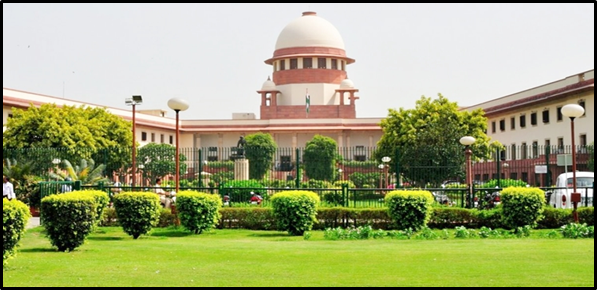Supreme Court Collegium
FILE PICS
News
- Five judges have been recommended by the Supreme Court collegium to the Center to be chief justices of the high courts of Rajasthan, Punjab and Haryana, Gawhati, Allahabad, and Jharkhand.
- Arun Bhansali of the Allahabad High Court, B R Sarangi of the Jharkhand High Court, Vijay Bishnoi of the Gawhati High Court, Justice Sheel Nagu of the Punjab and Haryana High Court, and Justice Manindra Mohan Shrivastava of the Rajasthan High Court were all recommended for appointment as chief justices by the collegium.
- Presently, the Supreme Court collegium is led by Chief Justice D Y Chandrachud and includes Justices Sanjiv Khanna and B R Gavai.
About Collegium System In India
- The Collegium system governs the appointment and removal of justices to the High Court and Supreme Court and is headed by the Chief Justice of the Supreme Court.
- It has no basis in the Constitution. Rather, it has changed as a result of Supreme Court rulings.
- The appointment and transfer of judges is recommended by the Chief Justice of India (CJI) and the four senior most Supreme Court judges under the current system.
- Meanwhile, a High Court Collegium is led by the current Chief Justice and the two seniormost judges on that court.
- The government may also object to the Collegium’s decisions and request further information, but if the Collegium selects the same candidates again, the government will be forced to appoint them.
What led to the establishment of the Indian collegium system?
A sequence of Supreme Court rulings served as the inspiration for the collegium system:
- In S P Gupta v. Union of India, 1981 (First Judge Case), the Supreme Court ruled that consultation in the appointment process merely entails a sharing of opinions and does not call for concurrence.
- Advocates-on-Record Association v. Union of India, 1993 (Second Judge Case): The Supreme Court overturned its earlier ruling and redefined consultation to mean concurrence. It was determined that the President must abide by the CJI’s advice when it comes to selecting justices for the Supreme Court. Moreover, prior to providing such advice, the CJI must confer with two of his most senior colleagues.
- In the Third Judge Case of 1998, the Supreme Court ruled that “consultation of plurality judges” is a necessary part of the consultation process that the CJI must adopt. A collegium consisting of the four seniormost Supreme Court judges should be consulted by the CJI. They ought not forward the recommendation to the government, even in the event that two judges render a disapproving ruling.
- National Judicial Appointments Commission (NJAC): It was introduced to take the place of the previous collegium system for choosing judges. But a five-judge Constitution Bench ruled that it was unconstitutional and void, arguing that it endangered the judiciary’s independence.
Articles on Judicial Appointments under the Constitution
- Article 124: The President should appoint Supreme Court judges after consulting with such High Court and Supreme Court judges as the President deems necessary. Every appointment, except the CJI’s own, must involve consultation.
- Article 217: Judges of the High Court should be appointed by the President following discussions with the state governor and the Chief Justice of the Supreme Court. Additionally, the Chief Justice of the relevant High Court should also be consulted.
Source: Newsonair
Disclaimer: All efforts have been made to represent India accurately and as per India government. However, Universal School of Administration, Bengaluru and its associated people do not own any responsibility for the correctness or authenticity of the same.
Please notify on the email: [email protected] if any inconsistency is found for the factual correctness.

 FILE PICS
FILE PICS

